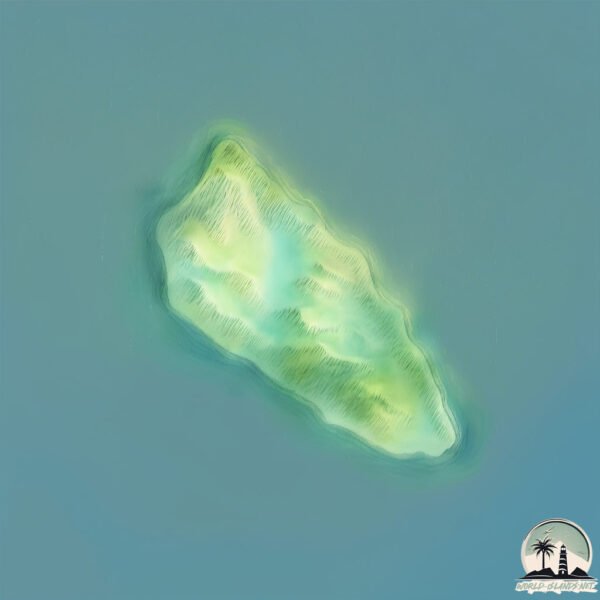Jinamoc

Welcome to Jinamoc, a Tropical island in the Philippine Sea, part of the majestic Pacific Ocean. This guide offers a comprehensive overview of what makes Jinamoc unique – from its geography and climate to its population, infrastructure, and beyond. Dive into the details:
- Geography and Size: Explore the island’s size and location.
- Climate and Weather: Weather patterns and temperature.
- Topography and Nature: Uncover the natural wonders of the island.
- Infrastructure and Travelling: Insights on reaching, staying, and making the most of your visit.
- News and Headlines: Latest News.
Geography and size of Jinamoc
Size: 1.395 km²
Coastline: 5.5 km
Ocean: Pacific Ocean
Sea: Philippine Sea
Continent: Asia
Jinamoc is a Small Island spanning 1.4 km² with a coastline of 5.5 km.
Archipel: Malay Archipelago – The world’s largest archipelago, located between mainland Southeast Asia and Australia, known for its immense biodiversity and cultural diversity.
Tectonic Plate: Sunda – Extends across Southeast Asia, encompassing parts of the Sunda Shelf, known for its interaction with the Australian Plate, contributing to volcanic activity in Indonesia.
The geographic heart of the island is pinpointed at these coordinates:
Latitude: 11.26171234 / Longitude: 125.07789205
Climate and weather of Jinamoc
Climate Zone: Tropical
Climate Details: Tropical Rainforest Climate
Temperature: Hot
Climate Characteristics: This climate is typified by heavy rainfall throughout the year, high humidity, and consistently high temperatures, leading to lush rainforests and rich biodiversity. Seasonal temperature variations are minimal.
Topography and nature of Jinamoc
Timezone: UTC+08:00
Timezone places: Australia/Perth
Max. Elevation: 12 m
Mean Elevation: 6 m
Vegetation: Evergreen Broadleaf Forest
Tree Coverage: 48%
The mean elevation is 6 m. The highest elevation on the island reaches approximately 12 meters above sea level. The island is characterized by Plains: Flat, low-lying lands characterized by a maximum elevation of up to 200 meters. On islands, plains are typically coastal lowlands or central flat areas.
Dominating Vegetation: Evergreen Broadleaf Forest
Characterized by dense, lush canopies of broadleaf trees that retain their leaves year-round. These forests are typically found in tropical and subtropical regions and are known for their high biodiversity. Jinamoc has a tree cover of 48 %.
Vegetation: 3 vegetation zones – Moderately Diverse Island
These islands start to show a broader range of ecological niches. With three vegetation zones, they may offer a mix of ecosystems like coastal areas, inland woods, and perhaps a distinct wetland or dry area. This diversity supports a wider range of flora and fauna, making these islands more ecologically complex than those with minimal diversity.
Infrastructure and Travelling to Jinamoc
Does the island have a public airport? no.
There is no public and scheduled airport on Jinamoc. The nearest airport is Daniel Z. Romualdez Airport, located 6 km away.
Does the island have a major port? no.
There are no major ports on Jinamoc. The closest major port is TACLOBAN, approximately 8 km away.
The mean population of Jinamoc is 1162 per km². Jinamoc is Densely Populated. The island belongs to Philippines.
Continuing your journey, Daram is the next notable island, situated merely km away.
JINAMOC ISLAND 🌴🌴 | BASEY, SAMAR 🦀🦐🦑



Philippines is classified as Emerging region: G20: Group of Twenty – Major economies comprising both developed and emerging countries, representing the world’s largest economies. The level of income is Lower middle income.
News – Latest Updates and Headlines from Jinamoc
Stay informed with the most recent news and important headlines from Jinamoc. Here’s a roundup of the latest developments.
- Daram Island in Samar cleared of red tide - MSNby "Daram island" - Google News on 9 February 2025
Daram Island in Samar cleared of red tide MSN
- Daram Island in Samar cleared of red tide - Inquirer.netby "Daram island" - Google News on 7 February 2025
Daram Island in Samar cleared of red tide Inquirer.net
- Toxic red tide detected in shellfish in four areas — BFAR - GMA News Onlineby "Daram island" - Google News on 7 February 2025
Toxic red tide detected in shellfish in four areas — BFAR GMA News Online
- Samar’s Daram Island now red tide-free, toxin remains in 3 other areas - pna.gov.phby "Daram island" - Google News on 7 February 2025
Samar’s Daram Island now red tide-free, toxin remains in 3 other areas pna.gov.ph
- Red tide found in Leyte waters, shellfish ban up in 5 other areas - pna.gov.phby "Daram island" - Google News on 21 January 2025
Red tide found in Leyte waters, shellfish ban up in 5 other areas pna.gov.ph
- BFAR: Shellfish in Zamboanga, Biliran, Samar remain positive for red tide toxin - GMA News Onlineby "Daram island" - Google News on 9 January 2025
BFAR: Shellfish in Zamboanga, Biliran, Samar remain positive for red tide toxin GMA News Online
- Samar bay cleared from red tide, condition remains in 6 other areas - pna.gov.phby "Daram island" - Google News on 8 January 2025
Samar bay cleared from red tide, condition remains in 6 other areas pna.gov.ph
- Shellfish ban remains in Eastern Visayas areas, except Zumarraga - gmanetwork.comby "Daram island" - Google News on 8 January 2025
Shellfish ban remains in Eastern Visayas areas, except Zumarraga gmanetwork.com
- Red tide alert lifted in Tacloban, Guiuan bays - Inquirer.netby "Daram island" - Google News on 3 January 2025
Red tide alert lifted in Tacloban, Guiuan bays Inquirer.net
- Shellfish ban up in 7 areas - Philstar.comby "Daram island" - Google News on 20 December 2024
Shellfish ban up in 7 areas Philstar.com
Please note: The data used here has been primarily extracted from satellite readings. Deviations from exact values may occur, particularly regarding the height of elevations and population density. Land area and coastline measurements refer to average values at mean high tide.
